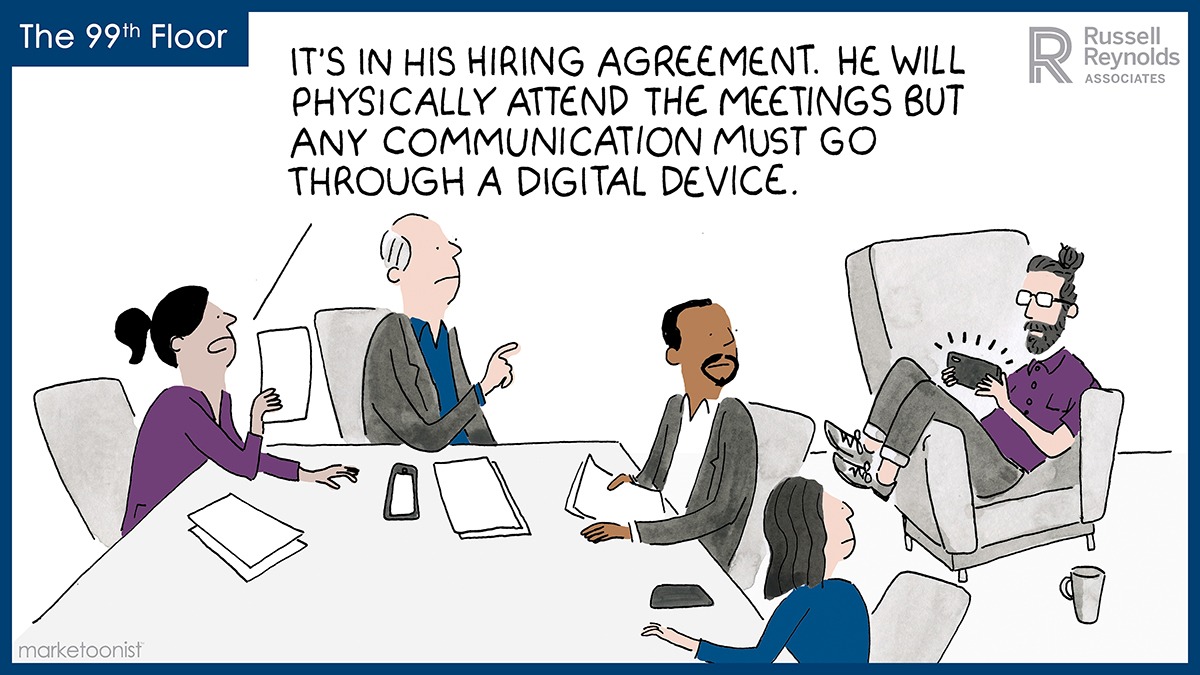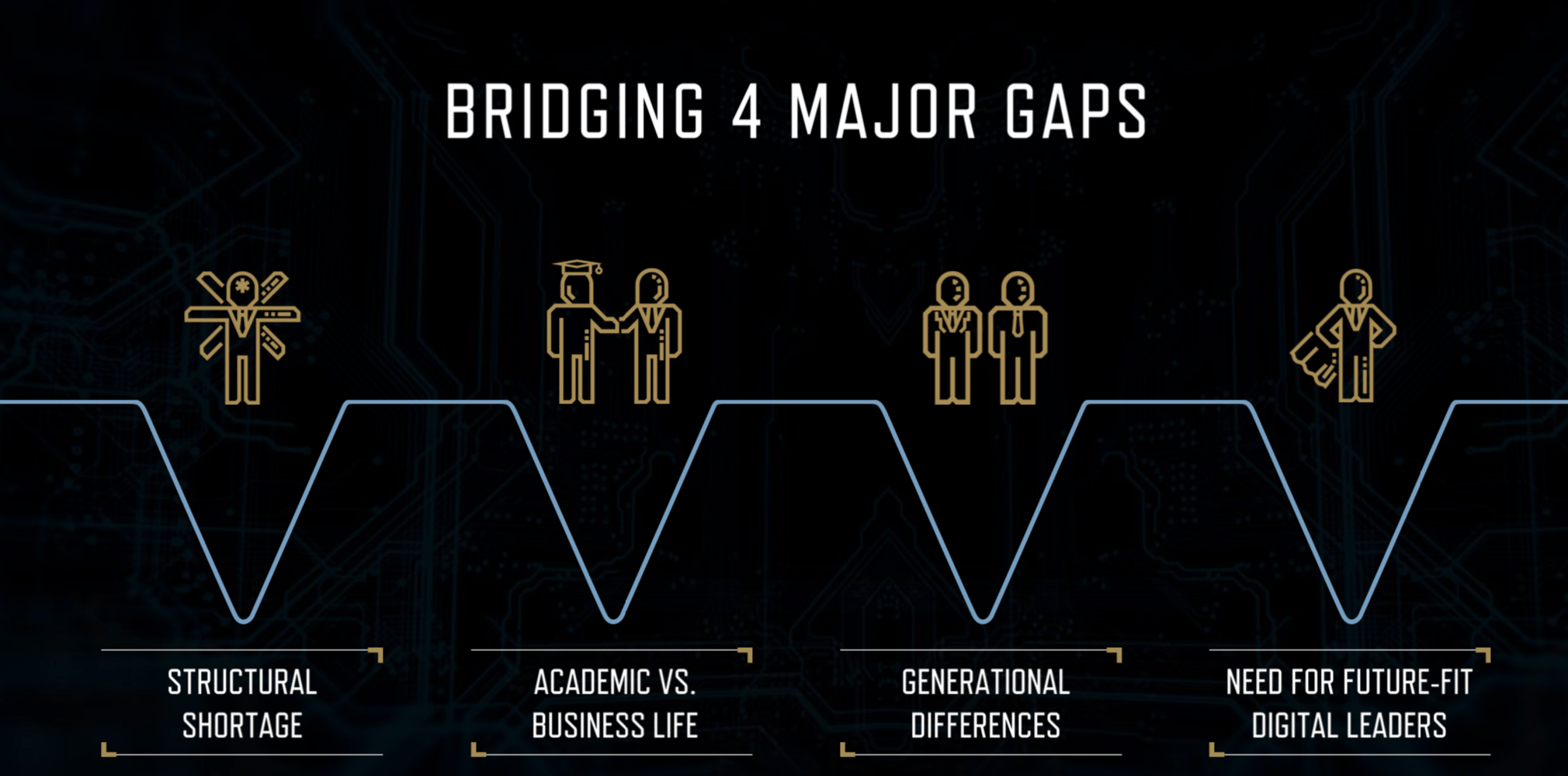Bridging the generation gap in your workplace
on 30 August 2019 for CompaniesIn recent years, many workplaces have seen a profound change; for the first time in history, four generations of employees can be found around the meeting table. As each generation has its own preferred communication styles, fostering inter-generational collaboration has become a pressing challenge for employers who want to onboard and integrate tech talent. The stakes are high; miscommunication and frustration can lead to lower productivity and even conflict. But for managers who succeed, the rewards are great.
This is how you bridge the generation gap in your workplace.
What is the generation gap?
Every generation has its own unique outlook and set of opinions, beliefs, skills, attitudes, and behaviors that set it apart from other generations. A generation can be thought of as a ‘birth cohort’: it’s not a rigid ‘box’ that everyone fits into, but it is a powerful clue that can help you connect with people of different ages.

The difference between an older and younger generation is known as a ‘generation gap’ and it’s become markedly more prevalent in the workplace in recent years. A modern workplace may have employees from the Baby Boomer generation (1946-1964), working alongside Gen Z (those born after 1996), with Generation X’ers (1965-1976) and Millenials (1977-1995) mixed in between.
Knowing the years when each generation begins and ends is important, as it can help you to manage employees of different ages more effectively. So, what drives the four generations found in today’s workplace?
The four generations in today’s workplace
Many organizations employ people for one of up to four different generations. These are:
- Baby Boomers: 1946 – 1964
- Gen X: 1965 – 1976
- Gen Y (Millennials): 1977 – 1995
- Gen Z (iGen or Centennials): Born after 1996
In general, you can place someone in a particular generation based on their date of birth. However, let’s not forget that everyone is an individual and people from a certain generation can have markedly different sets of attitudes, beliefs and abilities, depending on socio-economic factors such as their level of education, personality, and background.
What shapes these generations?
Generations can mean markedly different things in different countries due to for example different economic circumstances. However, there are three main pillars that shape generations:
- Economics
- Technology
- Parenting
For example, defining those born between 1946 – 1964 as ‘Baby Boomers’ refers to the economic boom that many countries experienced following the end of World War 2, leading to a marked rise in birth rates.
Another generalization would be that you could expect a Gen Z’er (born after 1996) to have a markedly higher aptitude for technology than people born in a previous generation. This has little grounding in fact, but it’s a commonly held perception or expectation.
Lastly, people’s preferred parenting philosophy is another trend that sets people from different generations apart. Baby Boomers often, though not always, hold the philosophy that they want their kids to have a better life than they had. By way of comparison, Millennials are often thought of as having a sense of entitlement that stems, in part, from the parenting philosophies of earlier generations.
As people from different generations have to work side by side, open communication is essential. So, what are the differences between generations and what are their strengths and skills?
Key inter-generational differences
There are a number of key differences between the four generations cited above. According to research, the greatest difference between the generations can be found in the following areas;
- Communication styles
- Characteristics and work ethics
- Feedback expectations
- Understanding of work/life balance
- Ways of resolving conflict
Let’s look at these areas in greater detail.
Communication style
There’s a marked generational gap in terms of preferred communication styles. Baby Boomers prefer warm and friendly working environments with flat hierarchies, while Millennials prefer collaborative workplaces and Gen Z’ers prefer face-to-face communication.

Characteristics and work ethic
When it comes to people’s work ethics, this is a clear difference between Gen X’ers who prefer working in fast-paced and flexible workplaces and Millennials who prefer collaborative environments.
Feedback expectations
Expectations regarding feedback are one of the biggest areas of generational difference. Millennials expect to be given continuous feedback, while Gen Z’ers prefer face-to-face discussions. Both Millennials and Gen Z’ers are at odds with Baby Boomers who prefer flat hierarchies and friendlier interactions.
Understanding of work/life balance
According to Forbes, Gen Z’ers are more motivated by security than other generations, and often prioritize that over achieving a suitable work/life balance. Baby Boomers prioritize humane values and prefer workplaces with a democratic culture, making them more likely to seek a fairer work/life balance. Millennials expect a flexible environment where they can balance their work and home life according to their needs and preferences.
Ways of resolving conflict
There’s a clear difference between Gen Z’ers who prefer to communicate face-to-face and Gen X’ers who want more informal access to leadership. Both generations are at odds with Baby Boomers who prefer more indirect ways of resolving conflicts.
Now that we have a clear understanding of the possible differences between workers of different generations, it’s time to look at possible ways to manage these generations effectively.
Guidelines for managing workers of different generations
When it comes to managing a team of different generations, there’s good news: according to researcher Jennifer J. Deal, working-age generations want largely the same things. Everyone appreciates constructive feedback; everyone wants to form good working relationships. Most people are cautious of change. Deal argues that differences between workers of different generations have much more to do with dealing with authority, than any fundamental disagreements. Employees from different generations actually have plenty in common.
With that in mind, here are some possible avenues to explore when managing employees from different generations.
Avoid stereotyping
By far the most helpful strategy is to treat everyone as an individual and judge them by their abilities, instead of their age. Millennials may be ‘digital natives’ according to the date on their birth certificates, but that doesn’t mean that a Millennial can code as well an ambitious Gen Z’er with a lifelong passion for Agile, for instance.

Open communication and transparency
If you’re concerned about how to treat people of different generations, the best course of action is to be transparent; ask them what they value in the workplace and how they prefer to work.
Mentoring is key; improve your training provisions
People want to be recognized for their own individuality, but they still appreciate support, mentorship, and guidance. With the right approach, you can offer effective mentoring to anyone, regardless of their generation. However good your organization’s training is, it can always be improved to meet the needs of people from different generations.
Create a company culture of mutual respect
One of the most helpful and practical approaches to managing workers from different generations is to focus on creating a respectful company culture. During individual employee performance review meetings, you could respectfully ask each employee what could make the workplace even more supportive for them. Listen to their ideas and ensure they feel their voices have been heard, then act on their suggestions, where feasible.
Conclusion
The generation gap is far from the only challenge you face as a manager or employer. Tech talent is scarce, and many recent graduates lack the skills necessary to function effectively in the workplace. But whether you are bringing your company to a higher level or preparing for Industry 4.0, motivated, passionate and driven IT, science and engineering talent is indispensable.

Attracting highly skilled tech talent is not always easy and hiring them is just the beginning. It’s a rough and rugged road from signing a graduate or young professional to developing a highly professional and inspiring future-fit digital leader. Exellys can help you bridge this gap, so why not get in touch with us today and find out how we can help.
Tags: exellys , generation gap , talent attraction , talent retention



